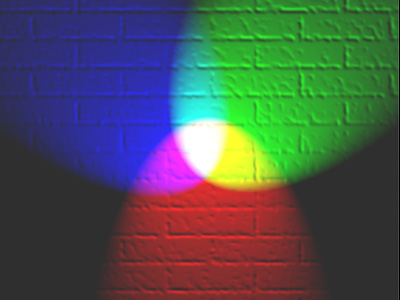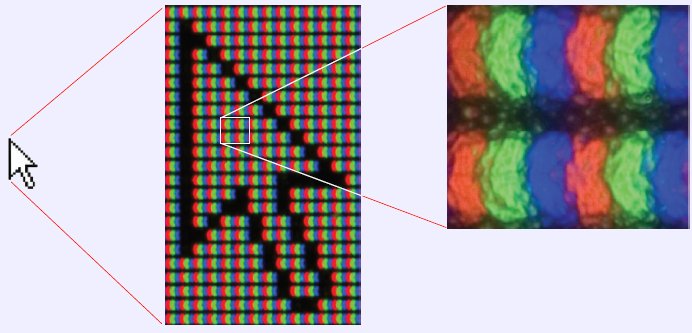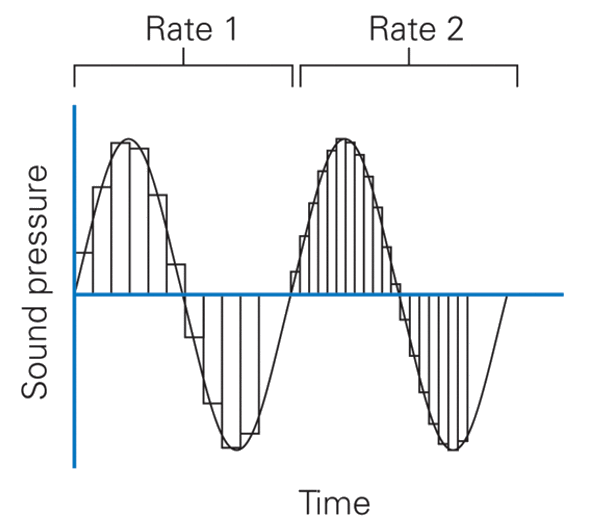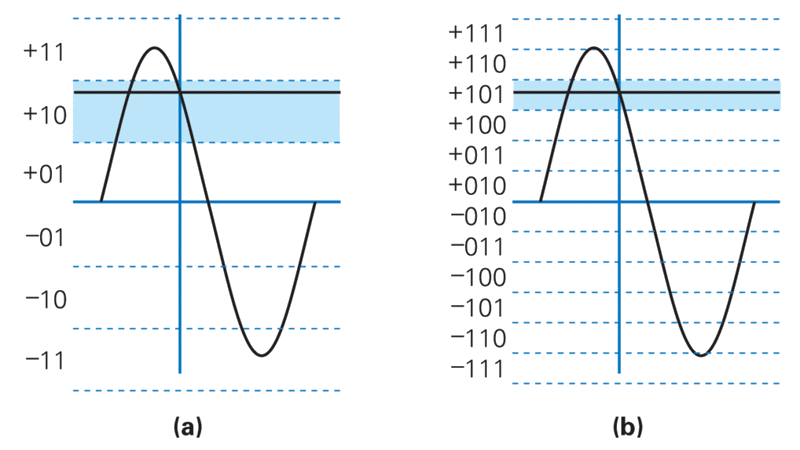- Representing numbers.
- Humans use decimal numbers: base 10.
- This requires ten symbols.
- Computers like to use two sybols, so they use binary numbers: base 2.
- Place value.
- Rightmost place value is one.
- Multiply by the base each time.
- Decimal: 105 = 100000, 104 = 10000, 103 = 1000, 102 = 100, 101 = 10, 100 = 1
- Binary: 27 = 128, 26 = 64, 25 = 32, 24 = 16, 23 = 8, 22 = 4, 21 = 2, 20 = 1
Additive Combination
- Conversion from.
- Decimal (42581):
Powers 104 103 102 101 100 Digits 4 2 5 8 1 Product 40000 2000 500 80 1 Sum: 42581 - Binary (101011011):
Powers 28 27 26 25 24 23 22 21 20 Digits 1 0 1 0 1 1 0 1 1 Product 256 0 64 0 16 8 0 2 1 Sum: 347 - More
- Decimal (42581):
- Conversion to binary.
- 211:
Number 211 211 83 19 19 3 3 3 1 Place 256 128 64 32 16 8 4 2 1 Subtract 83 19 3 1 0 Bits 0 1 1 0 1 0 0 1 1 - 78:
Number 78 14 14 14 6 2 0 Place 64 32 16 8 4 2 1 Subtract 14 6 2 0 Bits 1 0 0 1 1 1 0 - More
- 211:
- Binary addition.
1 1 0 0 1 0 + 1 0 0 1 1 1 1 0 1 1 1 1 1 1 1 0 1 1 + 1 1 0 1 1 1 0 0 1 1 0 1 1 1 1 1 0 + 1 0 1 1 0 0 1 1 1 1 1 1 1 1 0 1 0 1 + 1 0 0 1 0 1 0 1 1 1 0 0 1 0 1 0
Carry-out when the sum is ≥ the base.
More
- Mixing Light
- Paint
- Red, blue and yellow.
- Combine to black.
- Subtractive mixing.
- Light
- Red, blue and green.
- Combine to white.
- Additive mixing.

- Paint
- Representing and Displaying Colors.
- Displays have a grid of dots, “pixels”.
- Each pixel has three colored dots of light.
- The dots' intensity is varied mix any desired color.
- Each pixel is represented numerically.
- A number for each color describes its intensity.
- Conventionally, each number is a byte (8 bits).
- This should be familiar.
- Representing Images.
- Images are arrays of pixels.
- Image is a 2-dimensional array of pixels.
- Each pixel has a color.
- Modify images using tests and arithmetic.
- Add to each pixel to brighten.
- Re-color selectively.
- Images are arrays of pixels.
- Representing Video: Sequence of images, called frames.



- Representing Sound.
- Sampling.
- A to D, D to A.
- Sampling rate.
- Sample precision.
- Examples
- Music CDs are recorded at 44.1 kHz, using 16 bits per channel.
- Telephone calls are sampled at 8 kHz, using 8-bit samples.
- Nyquist Rule: Sampling must be twice the largest frequency.
- Sampling Rate Example.
- Sampling.
- Compression.
- Multimedia files are large: Need to make 'em smaller.
- This picture of the capitol is 1288 by 840 pixels. That takes 3×840×1288=3245760 bytes, or about 3M.
- I have a recording of the main title from Star Wars Episode IV. As an uncompressed .wav file, it takes 55M.
- Lossless (classical) compression:
Decompressed data is identical to the original.
- Run-length encoding: replace 20,20,20,20,20 with 5x20.
- Variable-length coding: shorter codes for more common characters.
- Color tables.
- Make a list of all colors in an image.
- Refer to them by index instead of full three-byte description.
- Works well for diagrams, but not photographs. Why would that be?
- Used by GIF.
- Record the difference.
- The difference between two things is often smaller than either.
- Stereo sound: record the second channel as the difference from the first.
- Video: record successive frames as the difference from the previous.
- Lossy compression.
- Data may differ from the original.
- Designed to “look” or “sound” the same.
- Sacrifices imperceptible detail for better compression. Examples
- The jpeg, mp3 and mp4 formats are examples.
- Sizes.
- The picture of the capitol is 373K as a jpeg.
- The mp3 version of the Star Wars theme is 9.8M.
- Multimedia files are large: Need to make 'em smaller.
- Multimedia Performance.
- Latency.
- Bandwidth.
- Optical Character Recognition (OCR).
- Meaning is imposed
0000 0000 1111 0001 0000 1000 0010 0000- Binary 15,796,256
- A reddish color
- ADD 1, 7, 17 MIPS assembler.
- Left 241, right 281 sound sample.
- IP address 0.241.8.32.